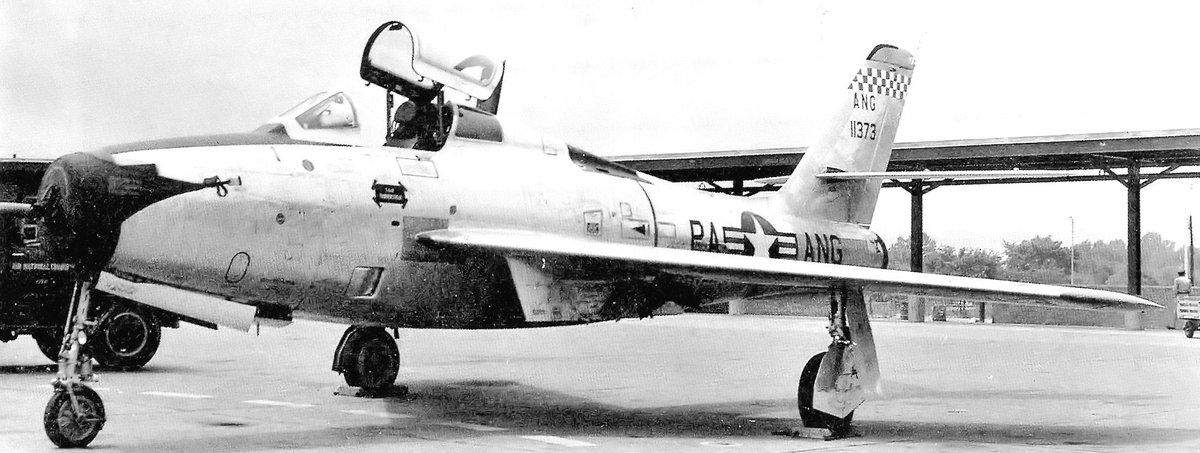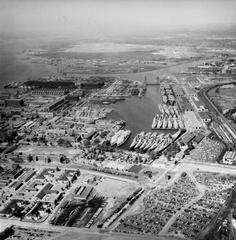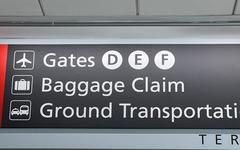
Philadelphia International Airport Visiting Guide: Tickets and Travel Tips
Date: 14/06/2025
Introduction: Philadelphia International Airport at a Glance
Philadelphia International Airport (PHL) serves as the primary gateway not just to Philadelphia, but also to the broader Northeastern United States and international destinations. Established in the 1920s and reopening to the public in 1945 after World War II, PHL was the only airport in its region offering direct flights to Europe at that time, cementing its role in global aviation (philadelphia-future.com). Over the decades, PHL has undergone significant expansions, becoming a major hub for airlines such as US Airways (now American Airlines) and Southwest Airlines, and nearly doubling its footprint to accommodate growing passenger and cargo demands (wikipedia.org).
Today, PHL consistently ranks among the top 25 busiest airports in the United States, handling over 30 million passengers annually with nearly 500 daily departures to more than 130 destinations operated by 22 airlines (phl.org). Major infrastructure upgrades and expansions are underway, including a $556 million plan for 2025 to enhance terminals, parking, and runways, in preparation for events such as the 2026 FIFA World Cup and the city’s 250th anniversary of the Declaration of Independence (delco.today; inquirer.com).
PHL offers travelers a full spectrum of amenities, ranging from diverse dining and shopping options to engaging art installations and robust accessibility services (phlcouncil.com). Its strategic location provides easy access to Philadelphia’s most celebrated historic landmarks and supports a vibrant regional economy, generating billions in economic activity and sustaining tens of thousands of jobs (wikipedia.org; phl.org).
This guide offers concise, up-to-date information on PHL’s history, visitor services, economic impact, and travel tips—everything you need for a seamless journey and an enriching visit to Philadelphia.
Contents
- Historical Evolution of Philadelphia International Airport
- Visitor Information: Hours, Tickets, Accessibility, Amenities, and Nearby Attractions
- Economic Impact of Philadelphia International Airport
- Frequently Asked Questions (FAQ)
- Summary and How to Stay Updated
- Official Sources
Historical Evolution of Philadelphia International Airport
Early Years and International Breakthrough
PHL’s origins date to the 1920s as a small airfield. Reopened to the public in September 1945, it quickly attained international significance, thanks to the launch of direct transatlantic flights by American Overseas Airlines (philadelphia-future.com). By 1950, the airport had four runways, with continuous expansion through the 1950s, including runway extensions and new terminal construction.
Expansion and Modernization
In the late 20th century, PHL doubled its area to 2.4 million square feet, introducing new terminals and facilities to meet the rising demand for domestic and international travel (philadelphia-future.com). By the early 2000s, it had become a key hub for US Airways and Southwest Airlines, consistently setting passenger traffic records (wikipedia.org).
21st Century Growth and Future Investments
Currently, PHL serves over 30.8 million passengers annually and offers nearly 500 daily departures to more than 130 destinations, operated by 22 airlines (phl.org). The airport is investing $556 million in infrastructure for 2025, focusing on terminal enhancements, parking, and airfield improvements—preparing for the 2026 FIFA World Cup and the city’s 250th anniversary (delco.today; inquirer.com).
Visitor Information
Hours of Operation and Ticketing
- Airport Hours: Open 24/7; individual airline counters and concessions have their own hours.
- Ticketing: Most airline ticket counters open 2–3 hours before scheduled flights. For up-to-date ticketing, refer directly to your airline.
Getting There and Parking
- Public Transit: SEPTA regional rail lines, buses, taxis, rideshare, and rental cars provide direct access.
- Parking: Options include hourly, daily, economy, and valet parking. See the PHL Parking page for current rates and maps.
Accessibility and Services
PHL is committed to accessibility, offering wheelchair assistance, accessible restrooms, elevators, and the PHL WORKS customer service program to ensure all travelers have a comfortable experience (phlcouncil.com).
Unique Amenities
Travelers enjoy a wide range of dining and shopping options, curated art displays, and special viewing areas for aviation enthusiasts. Occasionally, guided tours highlight the airport’s history and operations—check the official website or visitor center for details.
Nearby Attractions
- Independence Hall: The birthplace of American democracy (nps.gov Independence Hall).
- Liberty Bell Center: Iconic American symbol of freedom (nps.gov Liberty Bell).
- Philadelphia Museum of Art, Congress Hall, National Constitution Center: All are easily accessible from the airport.
Economic Significance
Regional and Statewide Impact
- Economic Engine: In 2017, PHL generated $15.4 billion in economic activity and supported over 96,000 jobs (wikipedia.org). Recent estimates show $18.7 billion in annual spending and over 102,600 jobs (phl.org).
- Self-Sustaining: PHL operates without local tax dollars, funded by landing fees, terminal rentals, and concessions (inquirer.com).
Cargo and Trade
PHL’s 449,761 square feet of cargo space and six active facilities support Northeast trade, with ongoing investments expanding capabilities (delco.today).
Tourism and Conventions
In 2024, Philadelphia hosted 1.2 million international visitors, who spent over $681 million, contributing to a $1.2 billion economic impact (6abc.com). The city’s 267 events brought 542,000 attendees and $636 million in revenue.
Employment and Community
PHL employs nearly 18,000 badged staff, with thousands more in related sectors such as hospitality, retail, and logistics (phl.org). Upcoming expansions are expected to sustain and create additional jobs.
Strategic Initiatives
Future goals include adding nonstop flights to Central and South America and expanding connections to Asia, further increasing Philadelphia’s global reach (phlcouncil.com).
Frequently Asked Questions (FAQ)
Q: What are Philadelphia International Airport’s visiting hours?
A: The airport is open 24/7; check airline-specific counters for hours.
Q: How do I travel from PHL to downtown Philadelphia?
A: Options include SEPTA rail and buses, taxis, rideshares, and rental cars.
Q: Does PHL offer guided tours?
A: Occasionally. Visit the official website or airport visitor center for details.
Q: Are accessibility services available?
A: Yes, comprehensive accessibility services are provided throughout all terminals.
Q: Where can I park?
A: Hourly, daily, economy, and valet parking options are available. Visit the PHL Parking page.
Philadelphia’s Iconic Historic Sites: Independence Hall and Liberty Bell
Independence Hall
Independence Hall, a UNESCO World Heritage Site, is famed as the birthplace of American democracy. Built between 1732 and 1753, it was the site of the signing of the Declaration of Independence and the drafting of the U.S. Constitution.
- Hours: Open daily, 9:00 AM–5:00 PM (last entry 4:45 PM).
- Tickets: Free, but required; reserve online or at the Independence Visitor Center.
- Tours: Ranger-led tours provide deep historical context.
- Accessibility: Fully accessible, with ramps, elevators, and assistive services.
- Location: 520 Chestnut Street, accessible by public transit.
- Nearby Attractions: Liberty Bell Center, National Constitution Center, Congress Hall.
(nps.gov Independence Hall)
Liberty Bell
The Liberty Bell is a powerful symbol of American freedom.
- Location: Liberty Bell Center, 526 Market Street.
- Hours: Daily, 9:00 AM–5:00 PM, with extended hours seasonally.
- Admission: Free; timed tickets recommended in peak seasons.
- Accessibility: Fully accessible with ramps and assistive listening devices.
- Features: Interactive exhibits and multimedia presentations.
(nps.gov Liberty Bell)
Summary: Key Points and Staying Informed
Philadelphia International Airport reflects the city’s dynamic blend of history, culture, and economic vitality. From its historic beginnings to its current status as a major international hub, PHL continually evolves to meet the needs of global travelers (philadelphia-future.com; phl.org). Its investments in infrastructure, services, and accessibility ensure a seamless travel experience for millions each year.
The airport’s role extends beyond transit, fueling Philadelphia’s economy and providing easy access to historic landmarks like Independence Hall and the Liberty Bell (nps.gov Independence Hall; nps.gov Liberty Bell). Whether you’re a traveler or a local, PHL is your gateway to the city’s vibrant past and promising future.
Stay informed on real-time updates, travel tips, and exclusive offers by downloading the Audiala app and following Philadelphia International Airport on social media.
Official Sources
- Philadelphia International Airport: History, Visitor Info, and Economic Impact (philadelphia-future.com)
- Philadelphia International Airport (wikipedia.org)
- Philadelphia International Airport Fast Facts (phl.org)
- Better Philadelphia Airport Investments (delco.today)
- Philadelphia Aviation Budget and Funding (inquirer.com)
- FY25 Budget Hearings Testimony Aviation (phlcouncil.com)
- Independence Hall Visitor Information (nps.gov Independence Hall)
- Liberty Bell Center History and Visitor Info (nps.gov Liberty Bell)
- Philadelphia International Airport Traveler Statistics (6abc.com)


















































































































